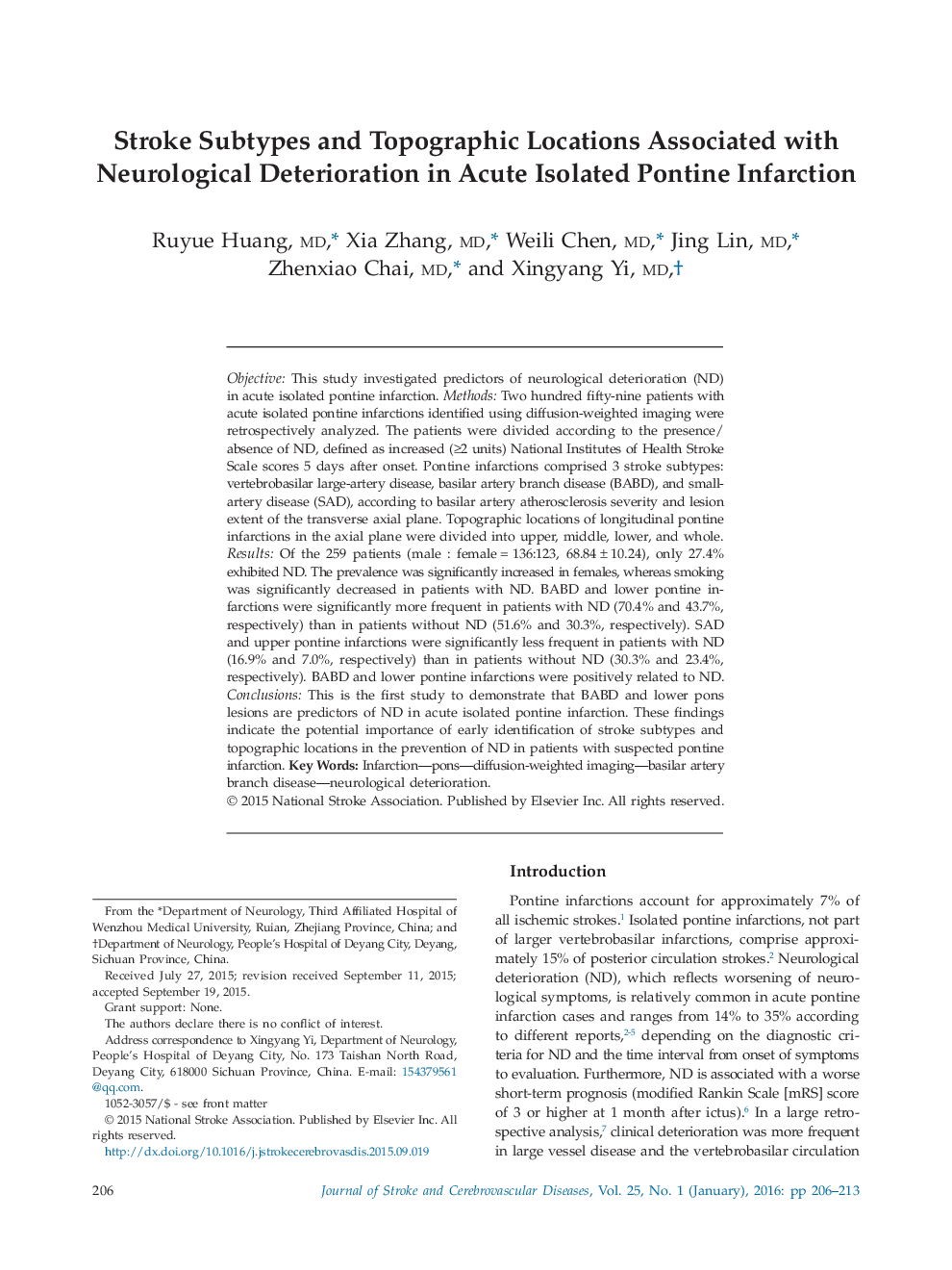| کد مقاله | کد نشریه | سال انتشار | مقاله انگلیسی | نسخه تمام متن |
|---|---|---|---|---|
| 2702340 | 1144529 | 2016 | 8 صفحه PDF | دانلود رایگان |
ObjectiveThis study investigated predictors of neurological deterioration (ND) in acute isolated pontine infarction.MethodsTwo hundred fifty-nine patients with acute isolated pontine infarctions identified using diffusion-weighted imaging were retrospectively analyzed. The patients were divided according to the presence/absence of ND, defined as increased (≥2 units) National Institutes of Health Stroke Scale scores 5 days after onset. Pontine infarctions comprised 3 stroke subtypes: vertebrobasilar large-artery disease, basilar artery branch disease (BABD), and small-artery disease (SAD), according to basilar artery atherosclerosis severity and lesion extent of the transverse axial plane. Topographic locations of longitudinal pontine infarctions in the axial plane were divided into upper, middle, lower, and whole.ResultsOf the 259 patients (male : female = 136:123, 68.84 ± 10.24), only 27.4% exhibited ND. The prevalence was significantly increased in females, whereas smoking was significantly decreased in patients with ND. BABD and lower pontine infarctions were significantly more frequent in patients with ND (70.4% and 43.7%, respectively) than in patients without ND (51.6% and 30.3%, respectively). SAD and upper pontine infarctions were significantly less frequent in patients with ND (16.9% and 7.0%, respectively) than in patients without ND (30.3% and 23.4%, respectively). BABD and lower pontine infarctions were positively related to ND.ConclusionsThis is the first study to demonstrate that BABD and lower pons lesions are predictors of ND in acute isolated pontine infarction. These findings indicate the potential importance of early identification of stroke subtypes and topographic locations in the prevention of ND in patients with suspected pontine infarction.
Journal: Journal of Stroke and Cerebrovascular Diseases - Volume 25, Issue 1, January 2016, Pages 206–213
